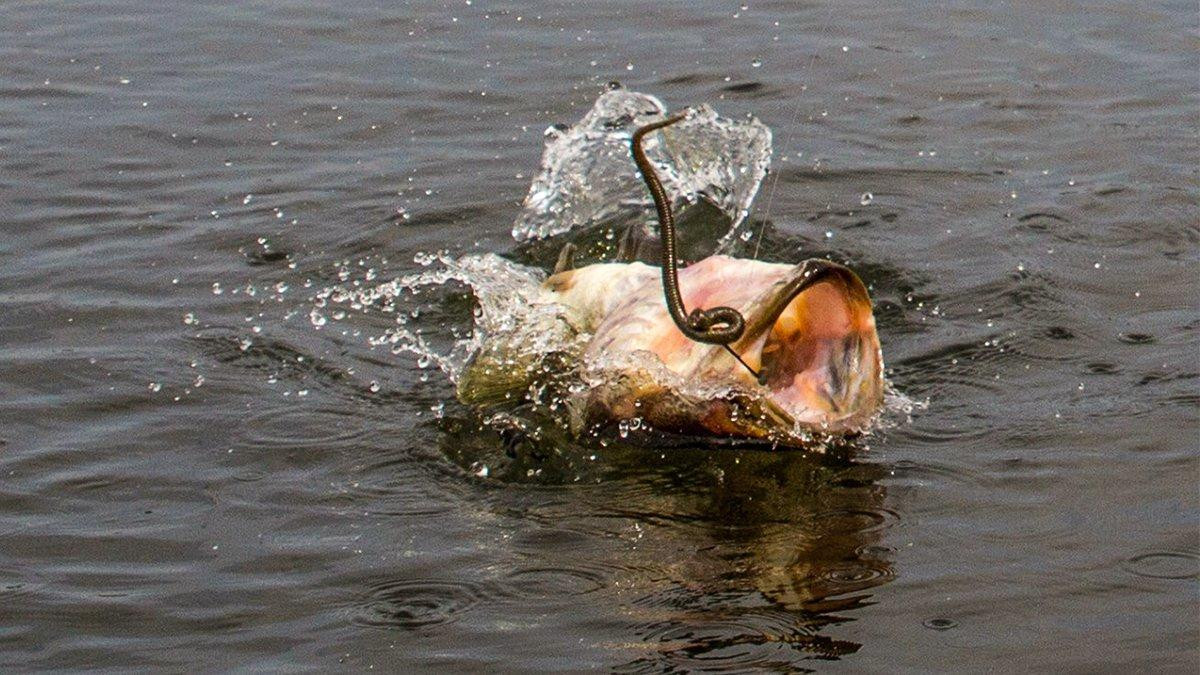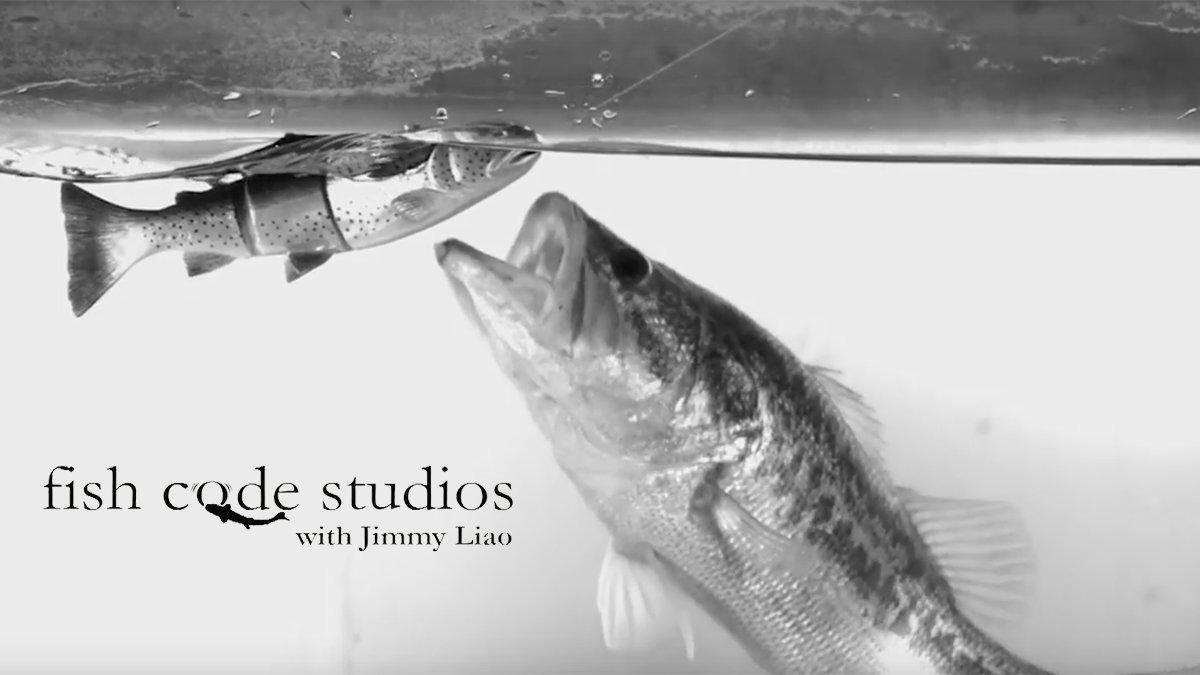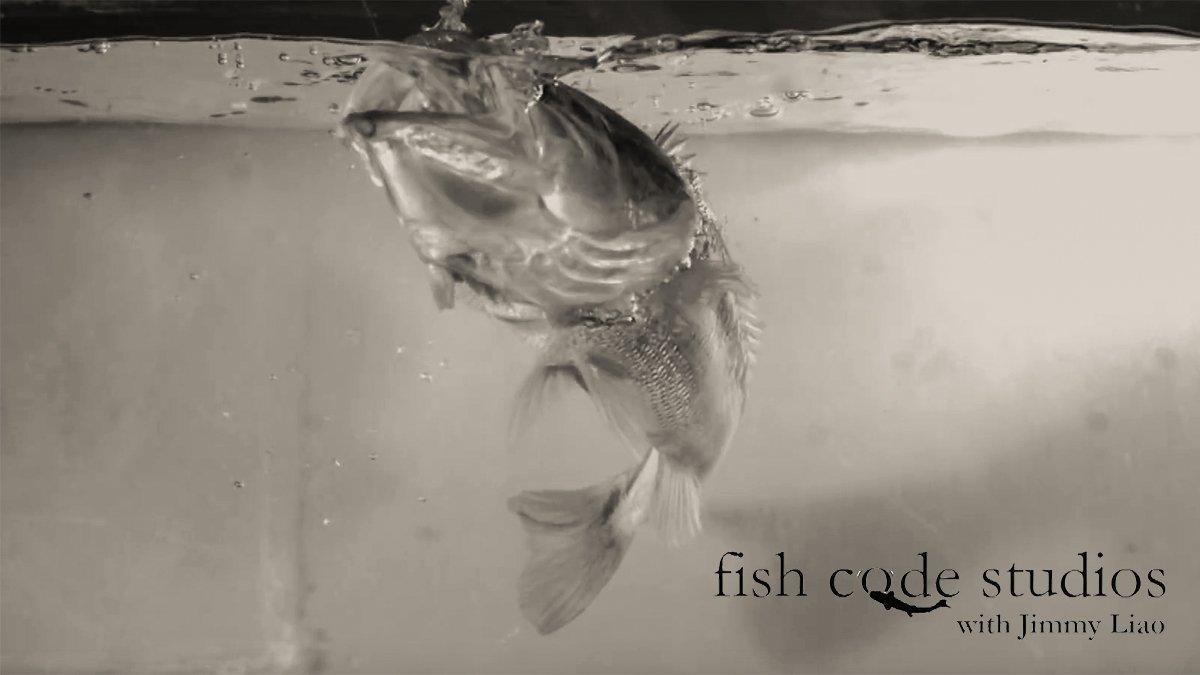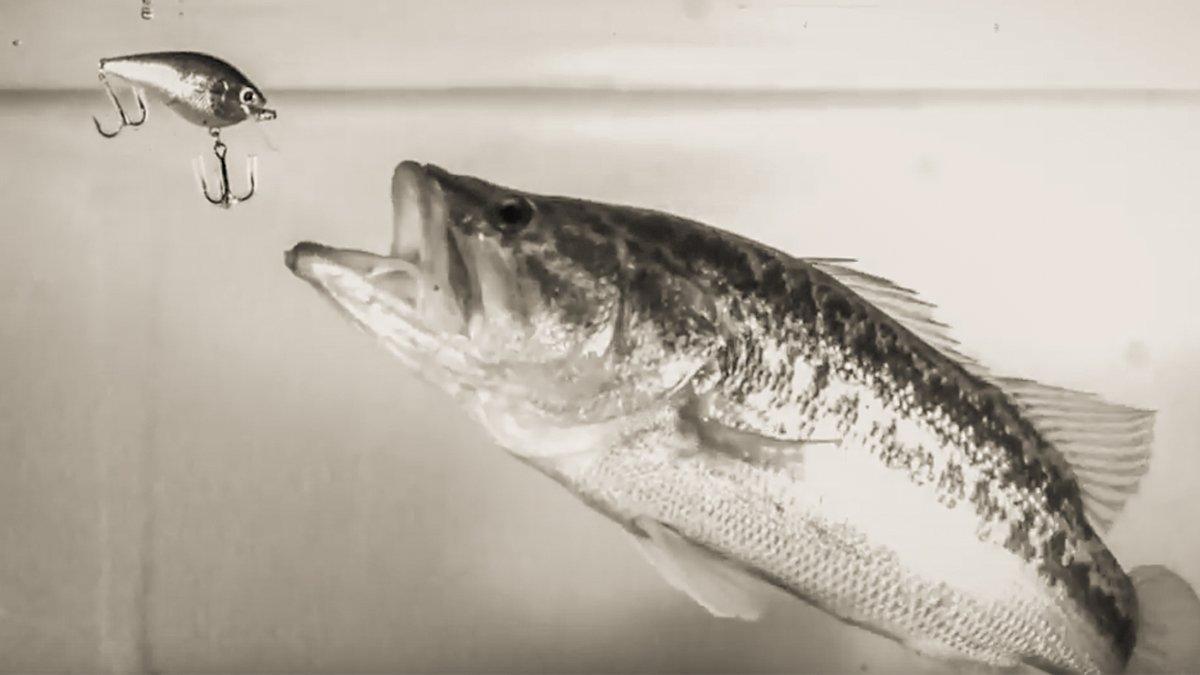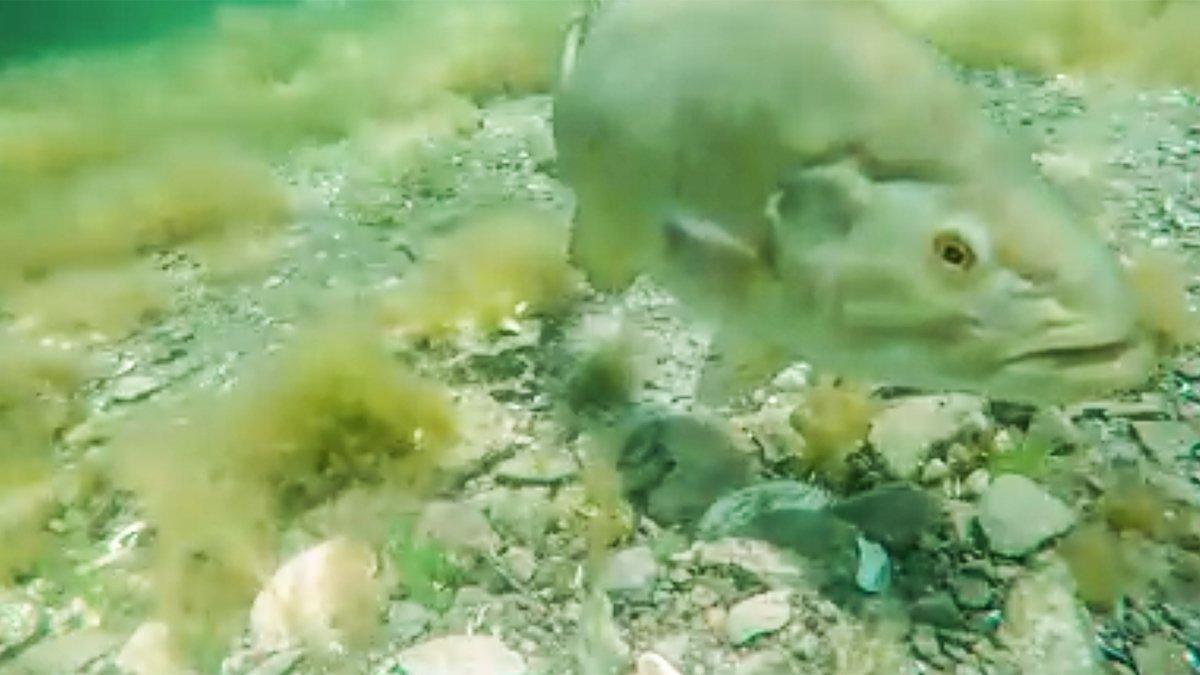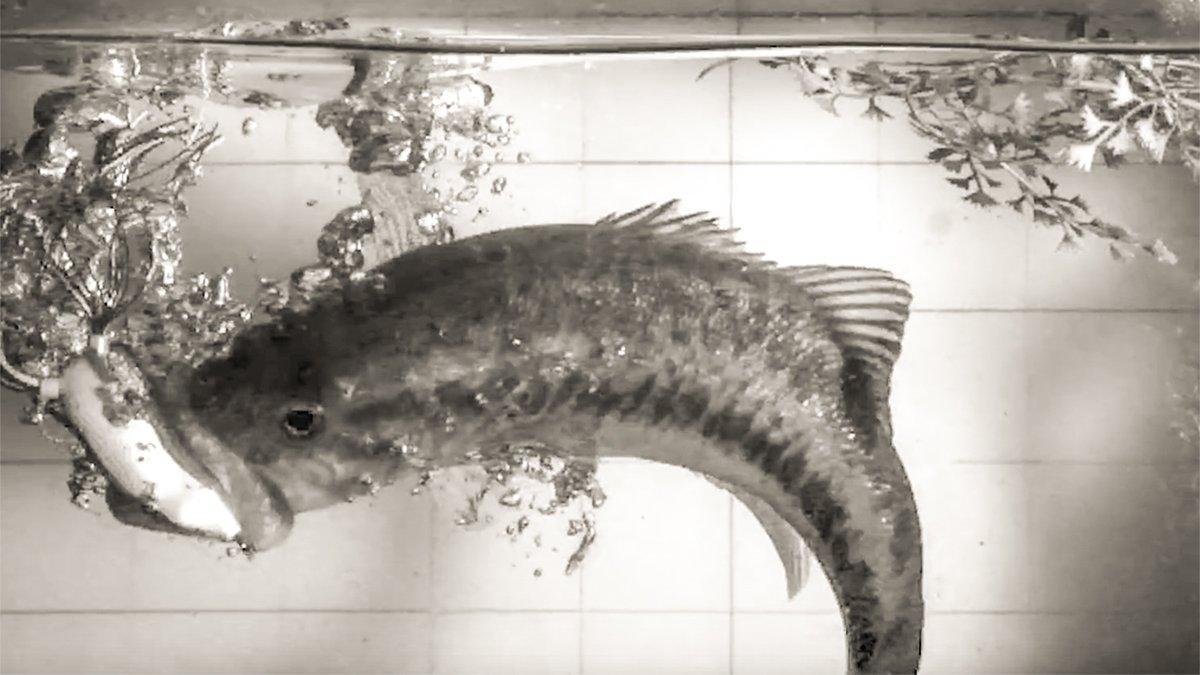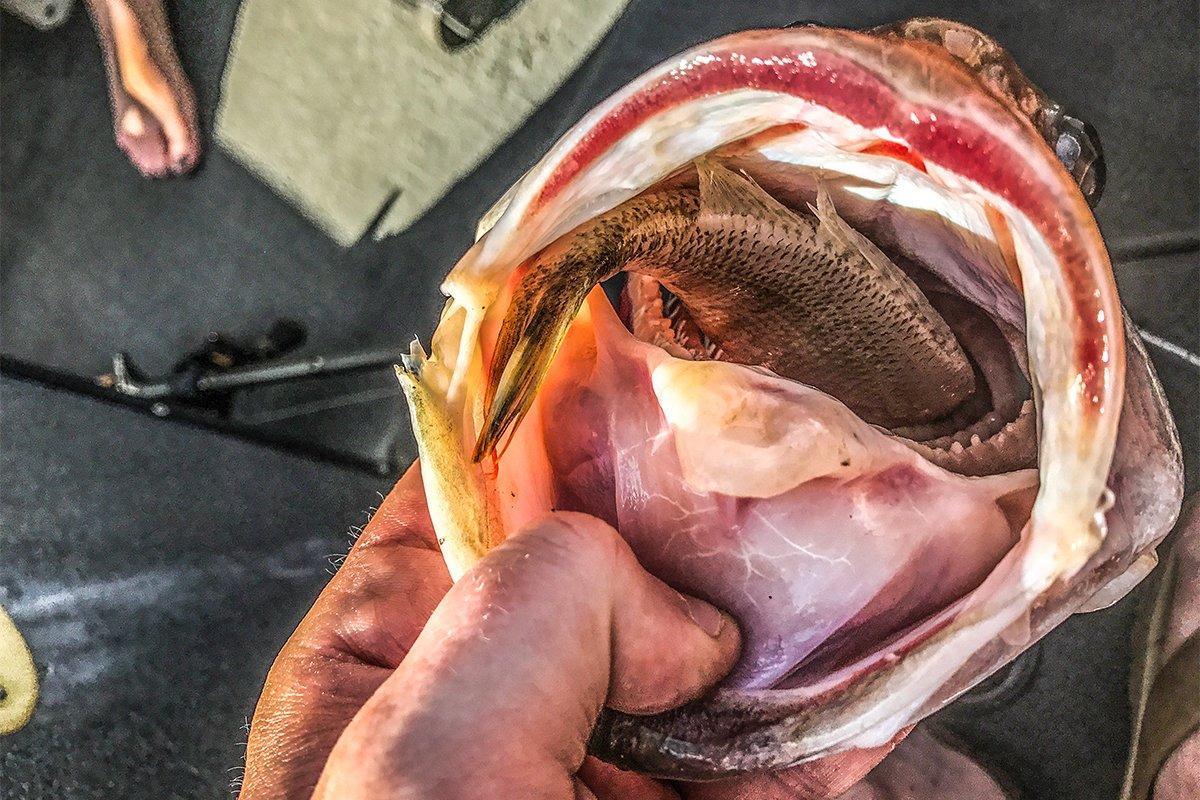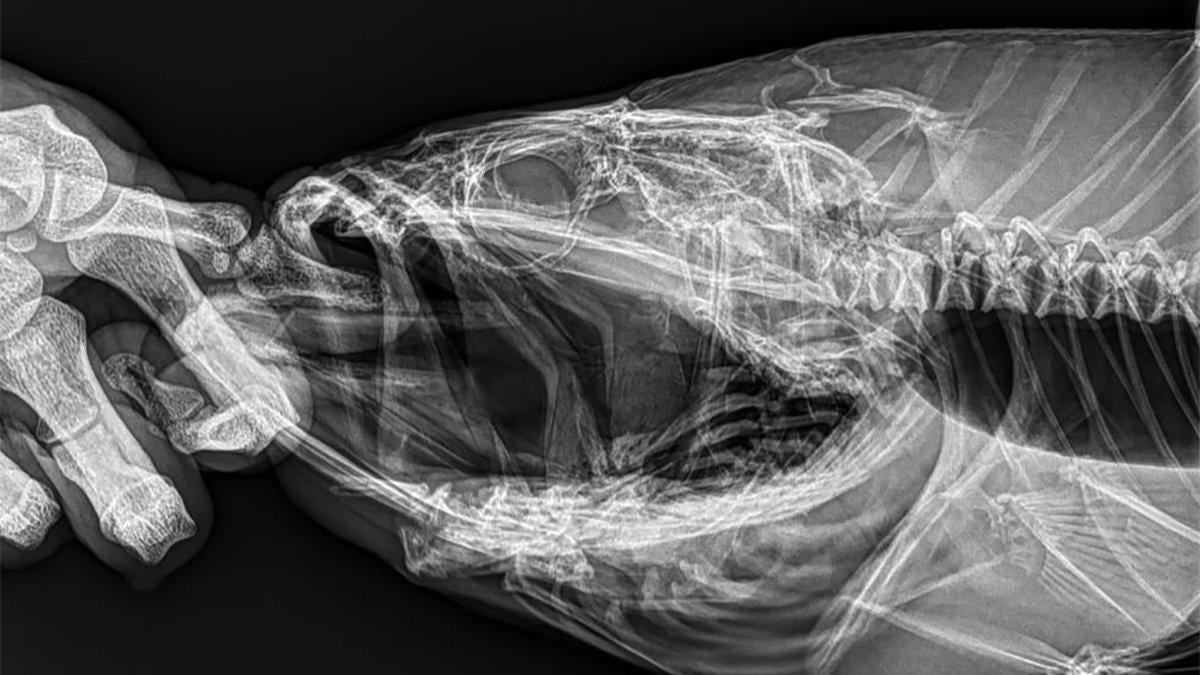Black bass are the most popular freshwater gamefish in the world, largely due to their voracious appetites and outstanding pound-for-pound fighting power. It’s important to understand, however, that there are many more types of bass species than what many anglers might think.
Types of Black Bass
There are actually 9 recognized black bass species including Alabama bass, Florida bass, Guadalupe bass, largemouth bass, redeye bass, shoal bass, smallmouth bass, spotted bass and Suwannee bass. All black bass species are generally elongated, have a larger mouth size, ctenoid scales and are carnivorous.
To properly identify each species, you must know the following:
- Upper jaw length and position compared to the eye
- Number, size and location of lateral stripes and/or blotches
- Number of rays and spines on dorsal and anal fins
- Number of scales on the lateral line
- Region of the country where the fish was captured
Remember, many of these species will breed together and are considered sister species. For example, a Guadalupe bass will breed with both spotted and smallmouth bass, creating offspring that can be difficult to identify without genetic analysis.
Alabama bass (Micropterus henshalli)
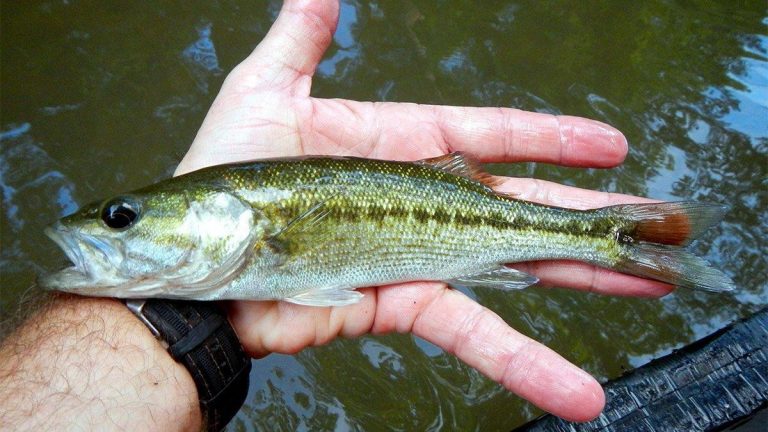
- First described in 1940 and became a species in 2008. It was originally a spotted bass subspecies.
- Lateral blotches on sides that do not touch the first dorsal fin
- Lateral stripe ends in a series of blotches on the caudal peduncle (forms a solid line in spotted bass)
- Spiny and soft dorsal fins connected with shallow notch
- Scales at the base of the dorsal and anal fins
- Dorsal fin with 10 spines and anal fin with 3 spines
- 68 to 84 lateral line scales. Usually 71 or greater.
Florida bass (Micropterus floridanus)

- First described in 1822 and became a recognized species in 2002.
- Still technically considered a subspecies of largemouth bass by the American Fisheries Society.
- Upper jaw extends past the eye
- Spiny and soft-rayed dorsal fins joined with a deep notch between them
- Dorsal fin with 9 spines and anal fin with 3 spines
- 59 to 72 lateral line scales
- Genetic analysis strongly needed to confirm identification
Guadalupe bass (Micropterus treculii)
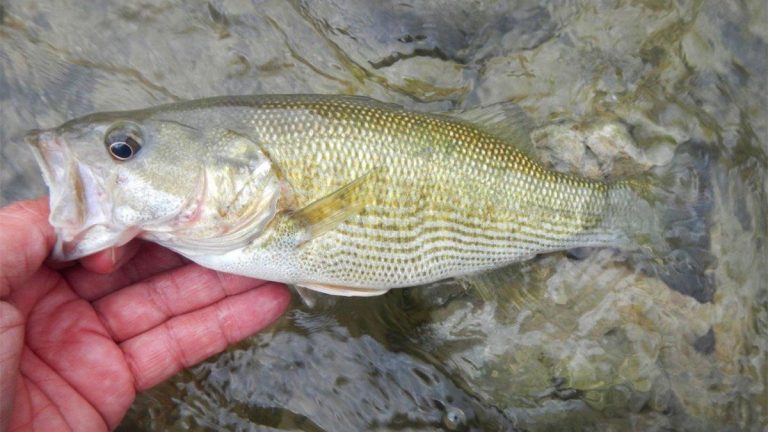
- First described in 1874
- Upper jaw does not reach past middle of the eye
- Spiny and soft-rayed dorsal fins joined with shallow notch between them
- Tooth patch on tongue
- Bases of soft dorsal and anal fins are scaled
- Dark lateral stripes in 10 to 12 bars
- Dorsal fin with 10 spines and anal fin with 3 spines
- 55 to 71 lateral line scales
Largemouth bass (Micropterus salmoides)
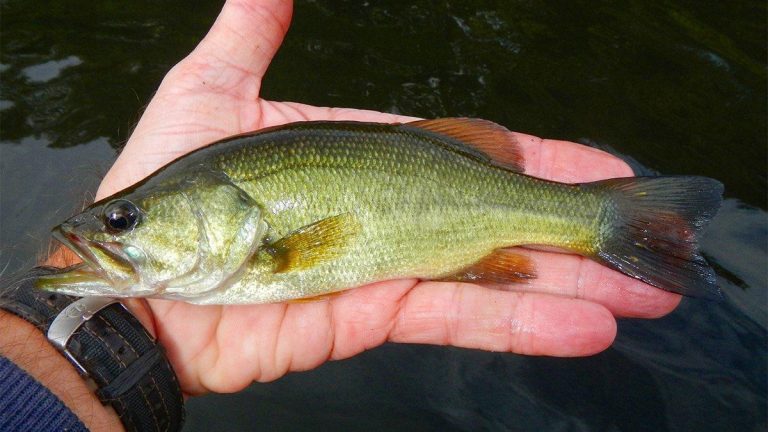
- First formally described in 1802
- Upper jaw extends past the eye
- Spiny and soft-rayed dorsal fins joined with a deep notch between them
- Dark midlateral stripe or blotches from tip of snout to caudal fin (depends greatly on water turbidity)
- Dorsal fin with 9 spines and anal fin with 3 spines
- 59 to 72 lateral line scales
Redeye bass (Micropterus coosae)
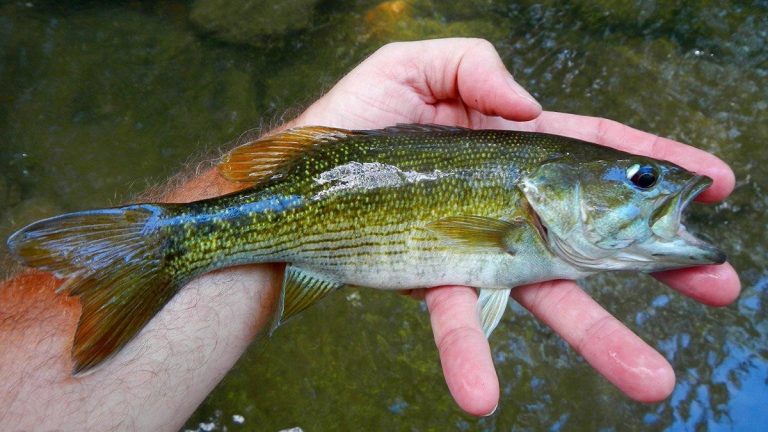
- First described in 1940, with 5 subspecies currently
- Subspecies include coosae, cahabae, chattahoochae, tallapoosae and warriorensis
- Upper jaw does not extend beyond the eye
- Spiny and soft dorsal fins are connected with very shallow notch
- Small, dark spots below lateral line that form horizontal rows
- Dark, vertical blotches on sides that disappear as they age and do not form horizontal bands
- Second dorsal, caudal and anal fins will appear red with a white margin
- Dorsal fin with 9 to 11 spines and anal fin with 3 spines
- 63 to 74 lateral line scales
Shoal bass (Micropterus cataractae)
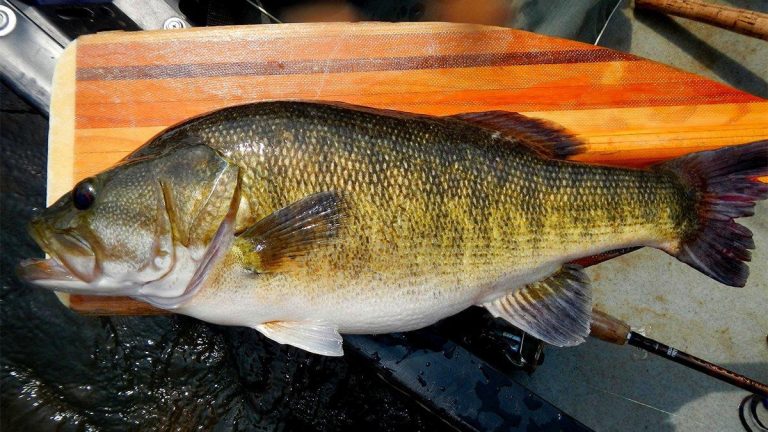
- First described in 1999
- Formerly a redeye bass
- The upper jaw does not extend beyond the eye
- Dark, vertical blotches that fade as the fish ages
- Dark spots below lateral line that form horizontal rows
- The spiny and soft dorsal fin are connected and have a shallow notch
- Similar to redeye bass without any red coloration or white margins on fins
- Large, dark spot at the base of the caudal peduncle
- Dorsal fin with 9 to 11 spines and anal fin with 3 spines
- 72 to 77 lateral line scales
Smallmouth bass (Micropterus dolomieu)
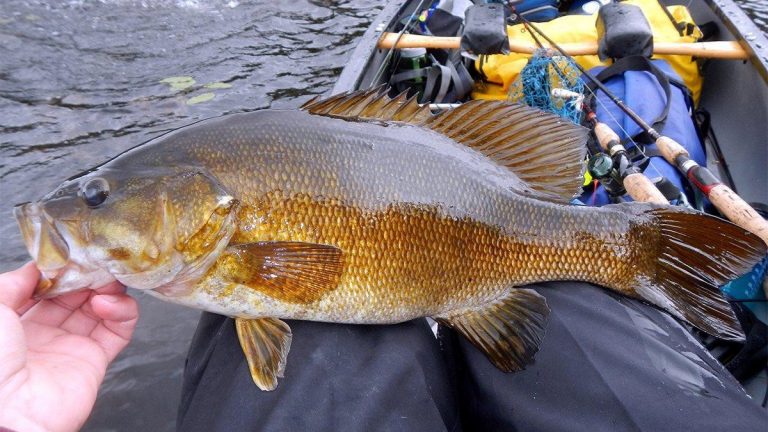
- First described in 1802
- Currently two classified subspecies (northern and neosho)
- A third non-taxonomically classified subspecies in Quachita Mountains
- Upper jaw does not reach past the eye
- 3 dark bars on each cheek
- Spiny and soft-rayed dorsal fins joined with shallow notches between them
- Bases of dorsal and anal fins have small scales
- 8 to 16 vertical lateral bars
- Dorsal fin with 9 to 10 spines and anal fin with 3 spines
- 67 to 81 lateral line scales
Spotted bass (Micropterus punctulatus)

- First described in 1819
- Currently two subspecies (Northern and invalidated Witchita)
- Upper jaw does not reach past middle of the pupil
- Spiny and soft-rayed dorsal fins joined with shallow notches between them
- Base of dorsal and anal fins have small scales
- Lateral body has multiple dark blotches that touch dorsal fin
- Lower lateral scales form dark, horizontal rows or stripes
- Dorsal fin with 10 spines and anal fin with 3 spines
- 55 to 71 lateral line scales
Suwannee bass (Micropterus notius)

- First described in 1949
- Upper jaw to central part of the eye, but not past it
- Typically short in length, rarely exceeding 16 inches
- Spiny and soft-rayed dorsal fins joined with shallow notches between them
- 12 vertical lateral bars of blotches
- Turquoise blue coloration on cheeks, breast and vent during breeding
- Dorsal fin with 10 spines and anal fin with 3 spines
- 57 to 65 lateral line scales
For more information on subspecies

Visit the American Fisheries Society Black Bass Conservation Committee’s Facebook page for lots of great information and photos of the other black bass subspecies such as the Altamaha, Bartrams, Chattahoochee, Choctaw, Tallapoosa and Warrior bass.
Special thanks to Steven M. Sammons, Ph.D of Auburn University’s School of Fisheries, Aquaculture and Aquatic Sciences for his help on the photographs.







